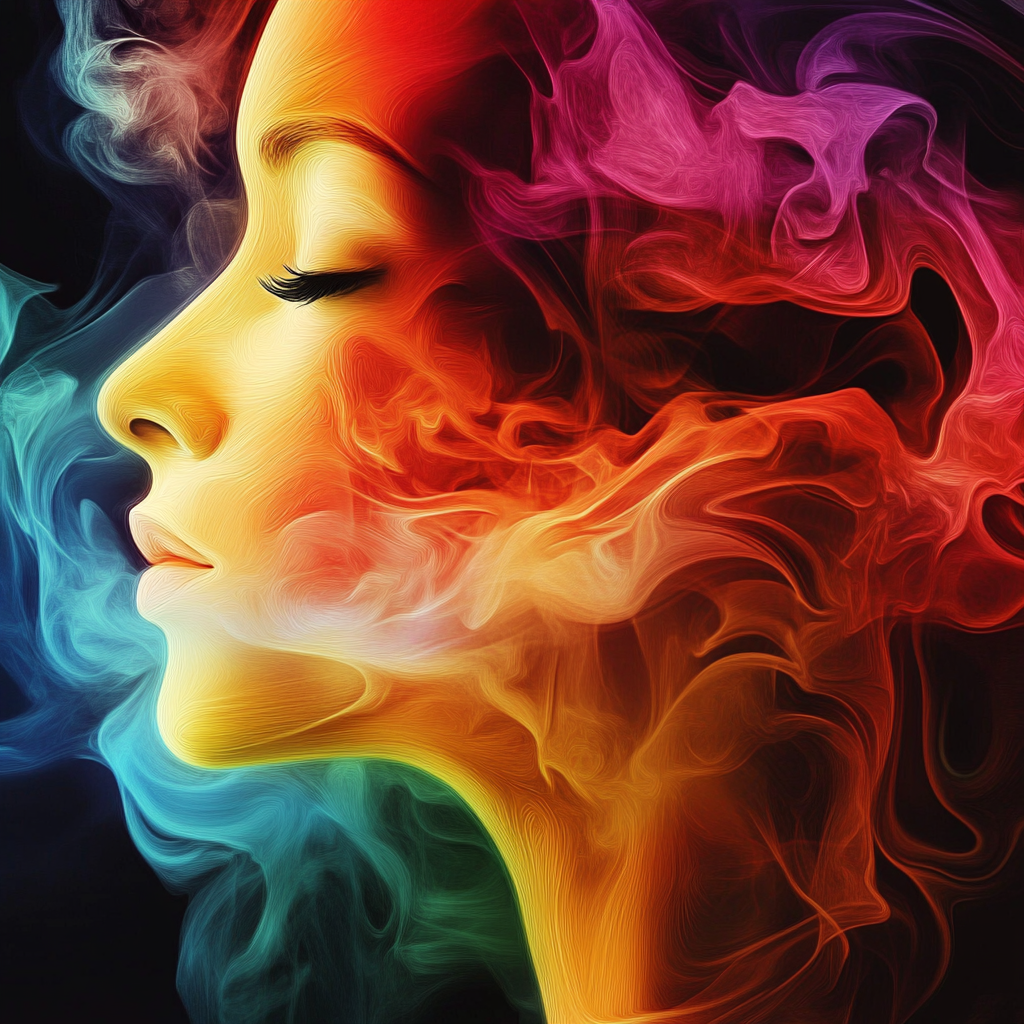Synesthesia is a unique neuropsychological phenomenon in which stimulation of one sense causes an automatic and involuntary response in another. For example, a person can “see” sounds or “hear” colors. The perception of color and scent is one of the less common but particularly interesting types of synesthesia. This phenomenon not only opens up new horizons in understanding the functioning of the human brain, but also inspires artists and designers to create unique works of art.
Psychological and neurobiological basis of synesthesia
Synesthesia is studied as a neurobiological phenomenon associated with the functioning of the brain. In people who experience synesthesia, it is believed that there is increased connectivity between different sensory areas of the brain. This may be the result of a genetic predisposition or unique brain development. Research show that synesthesia is often inherited, which confirms its genetic basis.
Psychologically, synesthesia can manifest itself in various forms and degrees of intensity. Some people experience this phenomenon from childhood and accept it as a natural part of their lives, while others may develop it later due to certain factors, such as trauma or strong emotional experiences. Synesthetes People often report that experiencing the world through synesthesia makes their lives more rich and multifaceted.
Historical and cultural examples of synesthetic perception
Historical evidence of synesthesia can be found across cultures and times, demonstrating the profound influence of this phenomenon on art and culture. For example, many ancient philosophers and artists, such as Plato and Leonardo da Vinci, viewed synesthesia as a way to gain a deeper understanding of the connections between different aspects of reality. Here are some examples:
- Antiquity: The Greeks and Romans believed in a close connection between music and mathematics, colors and sounds were often seen as interrelated elements.
- Middle Ages and Renaissance: Artists and musicians sought to create works that combined visual and sound elements, which was especially evident in the Baroque era.
- Modernity: In the 20th century, artists and writers such as Wassily Kandinsky and Vladimir Nabokov actively explored synesthesia, creating works based on the phenomenon.
Some cultures have used synesthesia in ritual and religious practices, highlighting its importance in human perception and spiritual experience.
How colors and scents interact: Scientific research
Scientific research shows that the interaction of colors and scents in perception can significantly influence a person’s emotional and psychological state. Many studies focus on how colors can enhance the perception of aromas and vice versa. For example, warm colors such as red and orange can enhance the perception of sweet and warm aromas such as vanilla or cinnamon. At the same time, cool colors such as blue and green are often associated with fresher, lighter scents such as mint or eucalyptus.
These studies show that the combination of colors and scents can be used to create certain moods or feelings. In psychotherapy and medicine, this can be used to improve the emotional state of patients. For example, using certain colors and scents in a room can help reduce anxiety and improve mood.
Practical Applications of Synesthesia: Art, Design and Marketing
Synesthesia has found its application in various fields such as art, design and marketing. Artists and designers often use synesthetic perception to create unique and memorable works. Visual arts and perfumery, for example, often overlap when artists try to convey scent through color compositions or, conversely, perfumers create scents inspired by specific flowers.
In marketing, synesthesia is used to create multi-sensory branding strategies. Companies can use scents in their stores or products to evoke certain associations and emotions, enhancing the visual perception of the brand. This helps create a deeper emotional connection with consumers and makes the brand more memorable.
Creating synesthetic compositions: Practical tips and examples
Creating synesthetic compositions requires understanding how different sensory elements interact with each other. Artists and designers can use the following tips to create harmonious synesthetic works:
- Use contrasting and complementary colors and scents: This can help enhance perception and create stronger emotional responses.
- Experiment with proportions: Try different ratios of colors and scents to find the optimal balance that produces the desired effect.
- Consider the context: It is important to consider the environment and culture when creating compositions, as the perception of synesthesia may vary depending on the context.
Examples of such compositions can be found in modern art installations, where artists combine color and scent to create a unique experience for viewers. It also finds application in interior design, where the use of specific color schemes and scents helps create the desired ambiance.
Synesthesia is a fascinating phenomenon that reveals new facets of perception and interaction of the senses. Synesthesia’s influence on art, design and marketing underscores its importance in modern culture. Understanding and harnessing this phenomenon can help create unique and memorable works, enhance emotional impact, and improve quality of life.
Synesthesia is a rare phenomenon affecting a small number of people, but elements of synesthetic perception can be developed or cultivated under certain conditions.
Synesthesia allows for the creation of unique sensory experiences that can enhance brand recall and enhance the emotional impact on consumers by combining color and scent elements.

